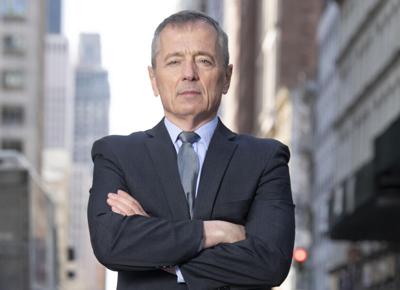LEWISBURG — Decades of war in places like Iraq have a number of devastating effects, including the unchecked looting of priceless archaeological artifacts and antiquities.
Col. Matthew Bogdanos will deliver this year’s Samek Distinguished Art Lecture on the theft and looting of the Iraq Museum and other venues during his presentation Monday at 6 p.m. in Bucknell University’s Gallery Forum on the second floor of the Elaine Langone Center.
Kris Trego, associate professor and department chair of Classics and Ancient Mediterranean Studies at Bucknell University, said that people often do not know or think about how artifacts and artwork end up in museums.
“Those in the audience who have not had the opportunity to think or learn about how cultural heritage objects are excavated, looted, and/or trafficked around the world will undoubtedly be shocked by how interconnected politics, conflicts and archaeology are,” she said. “Hopefully, Bogdanos’ talk will inspire the audience to question ‘who owns history’ and spread awareness about the connections between the trafficking of art and artifacts with illicit weapons and human trafficking.”
“Museums have a complex history of looting and accepting artifacts without verifying their proper provenance — the recorded journey of an artwork from its origin through one or more owners to the present day,” said Tiffany Demmon, public programs and outreach manager for Samek Art Museum. “I am happy that many in the museum field are trying to correct centuries-old practices regarding what they have in their collections.”
A graduate of Bucknell University, Bogdanos is a homicide prosecutor for the New York County District Attorney’s Office, a former amateur middleweight boxer and a U.S. Marine. He joined a counter-terrorism task force in Afghanistan, receiving a Bronze Star for actions against al-Qaeda. He was the first to expose the link between antiquities trafficking and terrorist financing and presented those findings in 32 countries, including the United Nations, Interpol, British Parliament, the European Union, the European Parliament and the U.S. Congress.
As a Marine Corps reservist, he led a counter-narcotics operation on the Mexican border and served in Desert Storm, South Korea, Lithuania, Guyana, Kazakhstan, Uzbekistan and Kosovo.
“I am thrilled, and eagerly anticipate Mr. Bogdanos’ talk on the matter,” Demmon said.
She said the topic of repatriation, which is returning cultural property, often referring to ancient or looted art, to its country of origin or former owners or their heirs has always intrigued her and drew her to work in the museum field.
As an archaeologist, Trego works with museums to research and protect cultural heritage artifacts.
“Matthew Bogdanos’ work has introduced a sea change in the museum and collecting worlds, and the importance of his work — both in Iraq as a Marine and in the U.S. as a prosecutor with the N.Y. District Attorney’s Office — cannot be overstated,” Trego said.
In 2005, Bogdanos received a National Humanities Medal from President George W. Bush for helping recover more than 6,000 of Iraq’s treasures, and he helped recover more than 3,000 after that.
In 2009, he deployed to Afghanistan for his sixth post-9/11 combat tour.
“He inaugurated the first Anti-Trafficking unit in the U.S. and, as a result of their efforts, museums have responded to the pressure to ensure that any object in the museum’s collection was not illegally looted and sold,” Trego said. “When objects have been determined by Bogdanos and his team to be illicitly traded, they are increasingly returned to the country of origin.”
Returning to the DA’s Office in October 2010, Bogdanos continued the hunt, leading to the recovery of more than 5,000 priceless antiquities — totaling more than $400 million — stolen from Greece, Italy, Egypt, Iraq, Syria, Lebanon, Jordan, Israel, India, Pakistan, Afghanistan, Cambodia, Nepal, Thailand and others.
His presentation is free and open to the public and will be followed by a reception upstairs in the Samek Art Museum.

